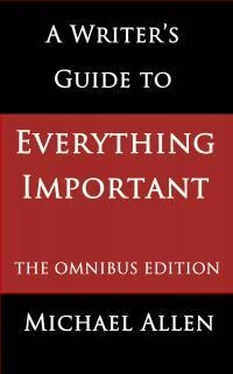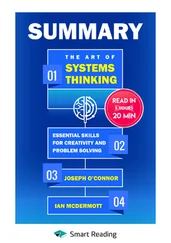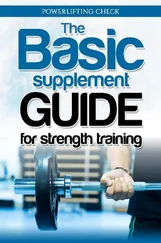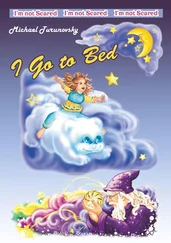It’s a lot of money. But then the entire world would know of your book and it would sell like crazy, right?
Hmmm…
And if you do sign up with this firm, or one of its associate companies, be prepared for the hard sell via a constant stream of phone calls and emails.
Certainly, whichever way you look at it, providing services to self-publishers is now a massive business. Of course, the POD side of the business is only part of it – more about the ebook version in the next section – but estimates of numbers of books and authors involved are pretty staggering for old-timers like me.
In 2013, a media technology company called New Publisher House published a report which suggested that the self-publishing market is worth $52 billion a year, which is twice that of traditional publishing.
The report also estimates (and they can only be estimates) that the number of aspiring authors who have completed manuscripts of books is more than 100 times the number of actual published authors. And self-published titles currently going on sale are 8 times the number of new titles in mainstream publishing.
Even if you divide these figures by two (or ten?), they still amount to a huge amount of authors, books, and money.
4.2 Here come the ebooks
Ebooks have been around for well over ten years, but in the early days they were mostly made available in pdf form, or as Word files. Most people didn’t seem to care for reading fiction – or long-form non-fiction – on a computer; and in those days computers were all desktop models. So most ordinary members of the public didn’t really expect ebooks to take off.
Except, that is, for a few far-sighted souls. Consider the US firm Renaissance E Books, which was founded in 1997. This firm was undoubtedly one of the earliest publishers of ebooks on the web. In 2003 I signed a number of contracts with Renaissance to republish some of my own books in new digital formats; these contracts were models of their kind. In 2013, when I wanted to concentrate all my ebooks in one place, I was able to claim back the rights with no problems, and I republished the books again via Kindle.
The ebook revolution can be said, for all practical purposes, to have begun on 19 November 2007, when Amazon first offered the Kindle for sale. The Kindle was the first little computer thingy which was designed principally for reading ebooks, and there must have been a bunch of people out there waiting for it because it sold out in five and a half hours. Even at $399. The device remained out of stock for the next five months.
This event was the catalyst for another vast change in the book-publishing universe.
It took a while for the Kindle to catch on. Lots of people swore that they really didn’t want to read books on some weird little gadget. Nothing like the feel of paper, et cetera, et cetera. But as soon as they got one they were on it day and night.
Ditto the writers. At first it was, Oh, I really want the validation of a traditional publisher. Any fool can shove things up on Kindle, there are no standards, full of rubbish, who would offer anything at 99 cents if it was any good? And so forth.
Well, let’s have a look at how popular the Kindle is now (and of course there are other devices which do the same thing).
Amazon itself doesn’t issue any sales figures, but Morgan Stanley (a merchant bank with its ear close to the ground) estimates that Amazon sold $3.57 billion worth of Kindle ereaders and tablets in 2012, and $4.5 billion worth of Kindle devices in 2013. Best guess for 2014 is $5 billion.
And how many books do you think the average Kindle owner buys, and at what average price? Take a look at your own device. Even allowing for those freebies that you’ve got on there, it’s still going to be quite a lot of money.
By the summer of 2010, Amazon was telling us that, in the previous three-month period, it had sold 143 Kindle ebooks for every 100 hardcover books. So much for all those readers who swore that they much preferred the feel of a book, would never switch to Kindle, can’t see the attraction, blah, blah, umpety blah.
The writers were, as I say, a bit slow to catch on. I wasn’t exactly lightning fast myself. But before long I became a passionate advocate. In my monthly column for the UK’s Writing Magazine I have been pointing out, over and over again, that this is (useful cliché) a golden age for writers.
We are in the early morning (dawn has gone by) of a new age of limitless digital opportunity. And unless you have lived through several decades of doing things the old way, and have experienced the pain and heartache which accompany such efforts, you just can’t imagine how lucky you are.
Today it is no longer necessary for writers to slave away for years, knocking on countless doors of agents and publishers, only to face continual rejection. Today – right now – writers no longer need to bother about agents and publishers. They can do it all themselves. They can write a book and publish it in ebook or paperback form without having to persuade a single soul to help them, or spend a penny piece on the process. What is more they can sometimes go from frequently rejected unknown to big-selling superstar in just a few months – using exactly the same book!
Here is just one example.
The Mill River Recluse is a novel by Darcie Chan. And when you look this lady up you find that hers is an absolutely classic story of the digital age.
It took her three years to complete the book, after which she tested it out on her family and friends, polished it up, and sent it out to traditional publishers. Got absolutely nowhere. Scores of rejections. Sent it out to dozens of agents, with the same result. Then one top-class agent took her on (Laurie Liss at Sterling Lord). Laurie sent it to all her best contacts, over a further two-year period. But still no sale.
By that time Darcie had become aware of this new-fangled digital self-publishing business. So she gave it a try. She edited the book herself, did her own formatting, designed her own cover, and handled her own publicity.
The book was published as a Kindle ebook in May 2011. In June, she was thrilled when 100 copies had been sold. After that, aided by some hard work on marketing, and a little bit of advertising, things began to snowball, until in the latter part of the year the book was selling several thousand copies a day.
At the end of 2011, when the figures were added up, The Mill River Recluse turned out to be the fourth biggest-selling book on the whole of Amazon in 2011. These figures were achieved with no paper edition at all. It was ‘just’ an ebook. And one that had been repeatedly rejected by the gatekeepers of traditional publishing.
What distinguished this book from ten thousand others? Ah, if only we knew. All we can say, with any confidence, is that sometimes a book will find its readers and really take off. But mostly it won’t.
If you really aren’t familiar with any other big-time self-published successes, google the names Anne Hocking, John Locke, Hugh Howey, and Joe Konrath. There are plenty of others.
4.3 The effects of ecommerce on publishers
Just to remind you, this is a book about literary agents. And in Part 4 we are primarily considering the impact on agents of the recent digital developments in printing and publishing.
Sections 4.1 and 4.2 outlined the far-reaching effects of print-on-demand and ebook technology respectively. So now it’s time to look more directly at the impact that these events have had on publishers, because the publishers are the group of firms with which the agents interact most closely. Perhaps even more closely than they work with authors. Thus the impact of change on publishers has powerful effects on agents too.
Читать дальше












